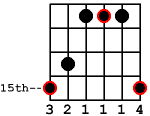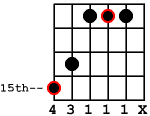Major Scale Shapes
CAGED System
G Form
|
G major scale, based around the G chord form |
|
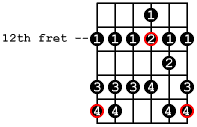 |
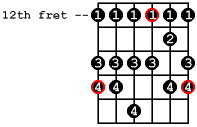 |
|
Moving up the neck to the 12th fret, is the next scale form. There are 2 different fingerings in this position. You are either going to shift down 1 fret for the 3rd string, or stretch with your 4th finger and grab the same note on the 4th string. This scale shape is most often learned as a minor scale fingering. It would be an E minor scale, if you thought of the root of the scale as the first note that you play with your first finger (E). But if the root is thought of as where your 4th finger is on the 6th string (G) this is just another fingering for the G major scale. G major and E minor are actually the same notes. It just depending on how you are thinking about it, how it is being used, and where the root of the scale is. A lot of times in music, the same sets of notes can have more that one name. |
|
|
These are movable major chord shapes, based on an open G. The first shape is just taking a basic open position G chord shape and barring your 1st finger where the open strings would have been. The 2nd chord form leaves out the 1st string, making this chord much easier, and more practical to play. Played with your 3rd finger (or 4th) at the 15th fret, this is a G chord. Keep in mind that there is a difference between being based on a particular chord shape, and the actual chord sound. |
|
G |
G
|
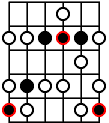 |
This scale form is built around this movable major chord shape, and is sometimes referred to as the G form (CA G ED) of the major scale. For once it is a G major scale, based around a G major chord. |
